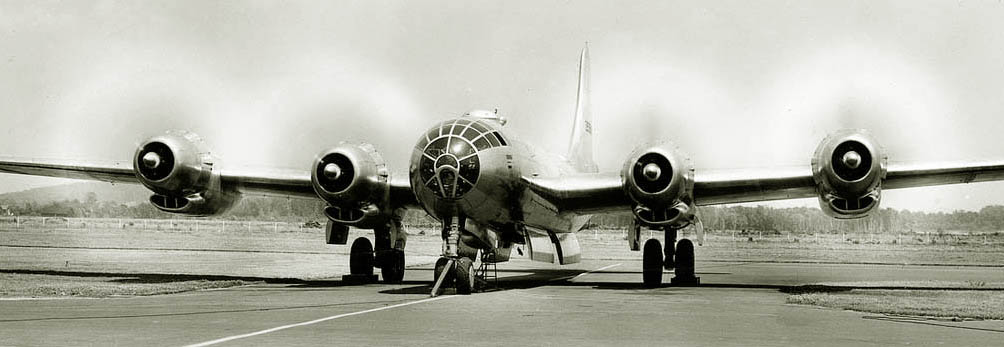
Aviation of World War II


 |
Aviation of World War II |


|
|
Soviet Union | Lend - Lease | Facts | Forum | Germany | Japan | R A F | U S A A F | Other | Photos |
|
|

Boeing B-44 Superfortress
And in May 1945 the first flight of the aircraft took place. The aircraft was equipped with new Pratt & Whitney R-4360-33 Wasp Major supercharged piston radial engines with a capacity of 3000 hp. from. The installation of new engines made it possible to increase the cruising speed of the aircraft by 50-60 km/h compared to the serial B-29 bombers, however, the aircraft was not built in the series due to the termination of the production of engines. Subsequently, the program was continued in the development of a new bomber, designated B-50. B-50 SuperfortressWork on the new superfortress began in 1944. In fact, it was the B-29D-BN, the last modification of the twenty-ninth, with the more powerful four-row 28-cylinder Pratt-Whitney R-4360-35 installed on it, developing up to 3500 hp. Many changes have been made to the aircraft design. The use of a new aluminum alloy made it possible to increase the strength of the wing, while simultaneously reducing its weight. The reinforced landing gear made it possible to increase the take-off weight by 17 tons compared to the B-29. The B-50 turned out to be much heavier than the B-29, although outwardly the bombers were almost the same. But in the air, the "fiftieth" was easy to recognize by its high keel (1.52 m higher than on the B-29). At the US strategic aviation airfields, all hangars were adjusted in height for the B-29, and in order not to alter them, the vertical tail of the B-50 became folding to the right. The defensive armament remained practically unchanged and consisted of 13 12.7 mm machine guns in five remotely controlled electric turrets. Up to 9072 kg of bombs could be suspended in two bomb compartments, and another 3630 kg were added on additional external nodes between the fuselage and the internal engines, if necessary. Serially produced in 1947-1953. A total of 370 aircraft were produced in various modifications and variants. In March 1949, the B-50A "Lucky Lady II" makes a truly historic flight - for the first time a plane flew around the globe without landing. The Happy Lady spent 94 hours in the air, covering a distance of 37,740 km, refueling from time to time from the KB-29M tanker. RB-50 reconnaissance aircraft with cameras on board during the Cold War made many flights along the border of the USSR, sometimes invading its territory. The deployment of the MiG-15 made these flights very dangerous, several planes were shot down. RB-50 flights over Soviet territory were discontinued in 1954 when they were replaced by the RB-47 Stratojet, which had a higher ceiling and transonic speed. |
|
|
December 01, 2018
|
|||||||||||||||||||||||||||||||||||||||||||||||||||||||||||||||||||||||||||||||||||||||||||||||||||